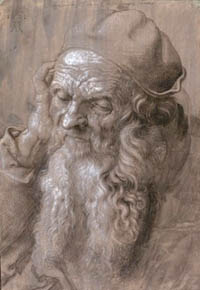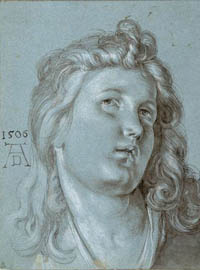By Patricia Keegan
As we face each day trying to process an immense tide of information, there is one general theme popping up everywhere. While we have always lived with undertones of uncertainty, the concerns were familiar and ageless, balanced by the optimism of a new generation. But more and more of us have gradually accepted a harsher, more pessimistic view of the state of our country and the world. Our futures don’t seem as promising on a communal or national level. Responding to the negatives only zaps energy by adding to the fear factor, but we have a choice. Rather than reiterating a litany of all the things we now fear, I will jump to how we could change the direction of some of these currents and move forward with faith and courage.
Despite the dissonance and the pain, a new wave of creativity and YES, idealism, is taking place across America. It is planting seeds of hope and connecting people in this digital age, in a way unprecedented in the history of our country and the world. There are hundreds of high energy, proactive efforts out there which hold great promise for the future.
Most of us are already familiar with the fantastic work of the Bill Gates Foundation in preventing malaria and saving lives, but not everybody can have such a major impact on the world. During the past few weeks I have looked at some of the less well known projects and found inspiration in what is possible when people come together with compassion. Three of the most exciting to me were Groceryships, The Center for the New American Dream and especiallyThe Charter for Compassion. Visit and discover some of the new energy at the grassroots of our nation.
Groceryships is an inspiring story of 30 year-old Sam Polk, a successful hedge fund trader on Wall Street who made “a pile of money,” but felt “empty and unfulfilled,” so he left to find something more satisfying.
Now he is looking outward, well beyond the money chase. He is working on projects that will remove some of the obstacles that deplete hope, bring misery and cast the “unfortunate” totally outside the realm of the “American Dream.” When he and his wife started the non-profit Groceryships, they wanted to help impoverished families who are food insecure and struggling with health issues. Groceryships is a six month program where families receive financial help, weekly nutrition classes, emotional support groups, cooking classes, guided shopping trips and exercise classes. By providing some of the tools to help people climb out of misery, the Polks will be exposing them to a better, more healthy lifestyle which will make for happier families and healthier children. Let us not forget that there are 50 million Americans going hungry, one in six of us, and one third of them are children.
The mission statement of The Center for the New American Dream at newdream.org states, “We seek to cultivate a new American dream one that emphasizes community, ecological sustainability and a celebration of non-material values.” New Dream offers two publications, Guide to Going Local to help people build community, reduce consumption, and support local economics, and Guide to Sharing, on how to begin building a sharing community.
In facing just two of the seemingly insurmountable challenges of this century -- feeding the hungry and preventing our planet from burning up -- one’s singular effort may seem comparable to an ant climbing a mountain. It can only become successful if the glue of “compassion” can hold these endeavors together. So how do we ignite this fire of compassion with urgency, so it has a magnetic pull, a contagious affect that would bring hundreds of thousands together with a common purpose to make a difference in our own communities?
In my research I discovered The Charter for Compassion, an organization reaching out and calling for change at the grass roots level. Membership in the Charter has grown steadily since its inception in 2009. It includes cities, towns, states and even some countries. The Charter is rapidly gaining momentum with signatures of well-known celebrities, writers, artists and educators, all making a commitment to “awaken compassion in our children, ourselves and our world.” The Charter for Compassion articulates why we who live in these times should be concerned about our fellow humans and our planet, and be inspired to take action.
The Charter is the brainchild of Dr. Karen Armstrong who received the TED Award in 2009. The TED organization was conceived in 1984 at a conference bringing together people from the three realms of Technology, Education and Design. Since then, the scope has become even broader and offers three yearly prizes of $100,000 to a leader in her/his chosen field of work. The winner must have an unconventional viewpoint and a vision to transform the world. The Charter For Compassion is Dr. Armstrong’s vision to promote the principles of the Golden Rule across the religious and global spectrum. It is a document that aims to inspire compassionate action around the world. This effort to build an interfaith ‘charter for compassion’ is guided by the Council of Sages, a multi-faith, multi-national group of religious thinkers and leaders, which includes Desmond Tutu, the Dali Lama and other notable international visionaries.
Oxford graduate, former nun and prominent scholar of the world’s religions, Dr. Armstrong has written more than 20 books around the ideas of what Islam, Judaism and Christianity have in common, and their effect on world events. In her extensive travels and study of the world’s religions, Dr. Armstrong has managed to connect some of the dots that factor into the pain of human chaos, and raises questions about the “unfulfilled promise of religion.” Her studies have revealed that the one common thread that runs through all major religions -- Christianity, Judaism, Islam, Hinduism, and Buddhism – is compassion. Compassion is the core of spiritual traditions and the basis of ethics in general. In her writings she raises the question, “If compassion is the fabric of morality, why then has religion failed us?”
When the spirit of compassion is put into action, it’s not outside the realm of human understanding, but an act, which even a young child feels and understands. Do unto others as you would like them to do unto you is the Golden Rule we recite routinely. So if we see around us a world lacking compassion, it probably means that we are not living up to the ideals of our religions. Arguably, in some ways we see progress, but in others there is obvious regression.
We don’t yet know the long- term effects of living in a global community, in a high tech digital age, with instant communication in which most of one’s day is spent staring at a screen. Could the time come when we are too busy or too over-stimulated to stop and feel the pain of those around us? Does that offer us an ultimate sense of emptiness, and how could that emptiness manifest itself in society other than destructively? One of my favorite Russian writers, Fyodor Dostoevsky, wrote in The Idiot that “Compassion is the chief law of human existence.”
Martin Luther King, in his philosophy of non-violent activism, emanated compassion; never sounding bitter, always looking toward the greater good of humanity. From his own interpretation of the golden rule, he was carrying out what he believed to be his purpose for existence. He once said, “True compassion is more than flinging a coin to a beggar; it comes to see that an edifice which produces beggars needs restructuring.”
Compassion is not easy, it means investing care and love into someone else, or into a “dream” for millions, as Dr. King demonstrated, without needing, or expecting a reward. In his interpretation of compassion, Vietnamese Zen Master Tich Nhat Hanh, one of the most influential spiritual leaders of our time, writes, “The essence of love and compassion is understanding. It is the ability to recognize the physics, material and psychological suffering of others. We go inside their bodies, feelings, and mental formations and witness for ourselves their suffering. Shallow observation as an outsider is not enough to see their suffering. We must become one with the subject of our observation.”
Karen Armstrong’s discovery of the thread of compassion is woven through us all, and really is the gold we carry around casually. It is buried deep within our being, but once ignited could become a driving force to set a new direction in the world.
To learn more about The Charter for Compassion visit charterforcompassion.org

























